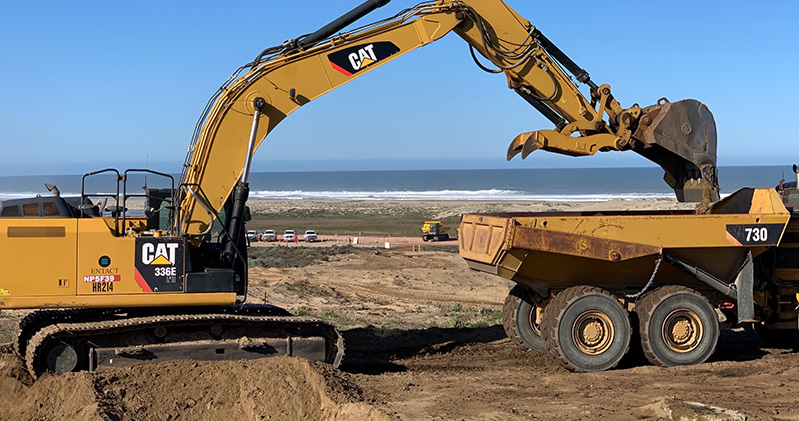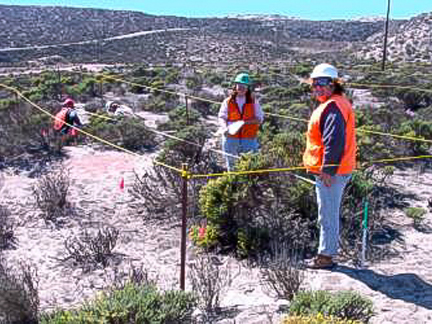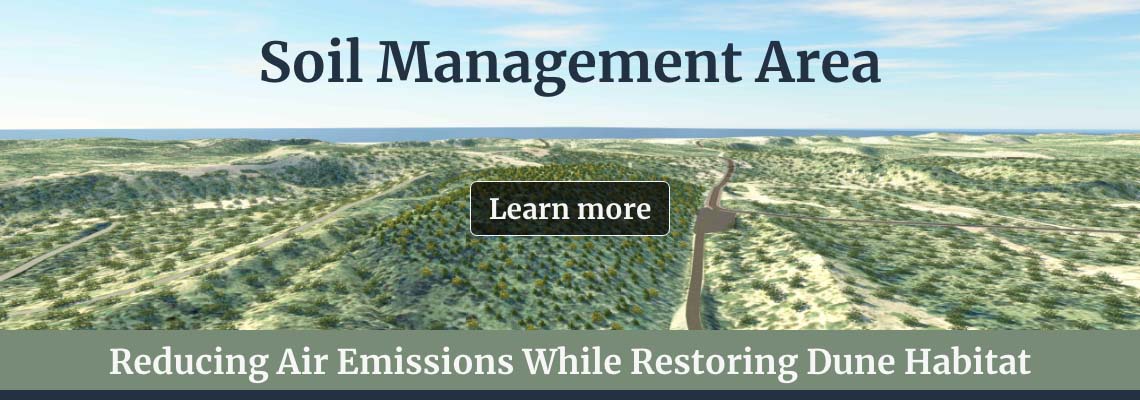1.24 Million
Man-hours (since 2010) worked with no Occupational Safety and Health Administration Recordable Incidents

Remediation
Since 1998, the primary remediation activities have focused on excavation activities and diluent‐recovery efforts. After certification of the project’s Supplemental Environmental Impact Report in 2005, hauling of Non‐Hazardous Hydrocarbon Impacted Soil from the former Guadalupe Oil Field to the Santa Maria Regional Landfill (SMRL) was initiated.
226
Acres of remediation
1.1 Million
Cubic yards of impacted material hauled to Santa Maria Regional Landfill
52
Individual excavations under the Regional Water Quality Control Board Cleanup of Abatement Order
Decommissioned
212
Oil Field Features
87
Pad Areas

29,577
Soil Samples Collected
934
Groundwater Monitoring Wells
22,072
Groundwater Samples Collected
Restoration
Restoration of areas disturbed during remediation and decommissioning activities is ongoing throughout the Field. The goal of vegetation restoration is to establish self‐sustaining plant communities that are native to the Guadalupe/Nipomo Dunes Complex. Successful restoration of functional habitat is also monitored for the degree to which it can be—and is—utilized by the rich wildlife communities that inhabit the site. Restoration sites are meticulously monitored to ensure that restoration is proceeding in accordance with site-specific performance standards.
650
Restoration sites

156
Acres of restoration in progress
88,226
Plants out planted from on-site Growing Facility
1,161
Listed plants salvaged
3,089
Listed plants planted

8.5
Acres of La Graciosa Thistle habitat created/restored
1,235
Western Snowy Plover nests counted
526
Western Snowy Plover nests hatched
Water Treatment
Water monitoring, investigations and associated recovery activities have been conducted at the Guadalupe Restoration Project for over twenty years. Three active free-product recovery systems are currently in operation at the site to recover separate-phase diluent. Fluids recovered are treated in the on-site Advance Water Treatment System and diluent is sent off-site for recycling.

1.36 Million
Gallons of diluent recovered
16.2 Million
Gallons of fluids treated at the on-site Advanced Water Treatment System
Pilot Studies
As part of the requirements set forth by the 1998 Cleanup or Abatement Order (CAO) issued by the Regional Water Quality Control Board (RWQCB), Unocal conducted pilot studies of innovative remedial technologies that may provide an alternative to excavating petroleum hydrocarbon-affected soils at the Guadalupe Restoration Project (GRP). These technologies were recommended by the Pilot Test Panel, comprised of three scientific experts with experience in the remediation of subsurface petroleum hydrocarbon-affected soils.
The purpose of conducting pilot studies was to evaluate the applicability and feasibility of potential remedial technologies under actual field conditions. Pilot studies were intended to provide information for final design.
Pilot studies completed at GRP include Land Treatment, bioremediation, biosparging, bioventing, natural attenuation, hot water flooding, and steam injection. The selected remediation and restoration alternative were developed from the result of these pilot studies. For additional information about pilot studies please contact the project team.




